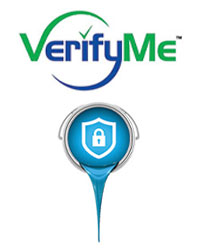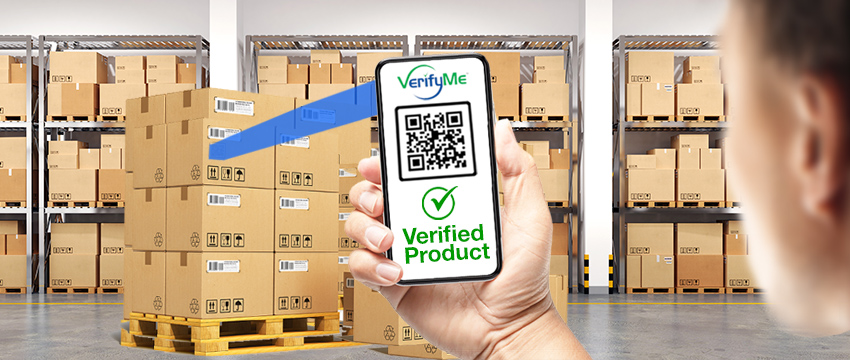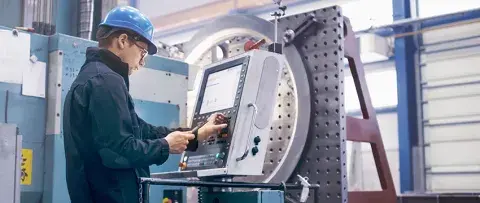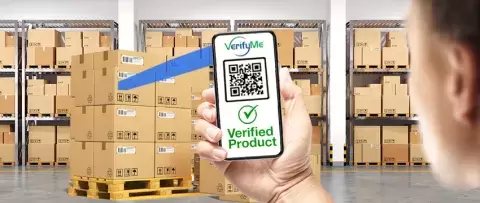Protecting Your Packaging and Your Brand with Security Inks
A discussion with product authentication and customer engagement experts at VerifyMe
Counterfeit products are a significant and growing problem which impact supply chain security, consumer safety, and your brand’s profitability. INX International and VerifyMe formed a strategic partnership in 2021. Together, we are dedicated to providing smart packaging solutions and cutting-edge technologies—such as security inks—to support brand protection programs that protect your brand’s reputation, its bottom-line, and its customers.
Counterfeit products are a significant and growing problem which impact supply chain security, consumer safety, and your brand’s profitability. INX International and VerifyMe formed a strategic partnership in 2021. Together, we are dedicated to providing smart packaging solutions and cutting-edge technologies – such as security inks – to support brand protection programs that protect your brand’s reputation, its bottom-line, and its customers.
How can brand owners use security inks to clamp down on, prevent, detect, and stop counterfeiting and diversion? For every company that has an established brand protection program and strategy, there are just as many who do not. INX recently spoke with Keith Goldstein, COO, and Dave Sandello, Director, Sales & Business Development, at VerifyMe, a technology solutions provider specializing in counterfeit prevention, authentication, serialization, and track and trace features for labels, packaging, and products.
The Challenge
Q: Shane Bertsch
Based on your expertise, what industries are most exposed to counterfeit products and market diversion?
A: Dave Sandello
Counterfeiting is an industry-wide, global problem. If a product is produced, it is counterfeited somewhere, sometime. Counterfeit products are typically not made using materials of the same quality or manufacturing regulations as the authentic products. Components of larger products are also counterfeited. At VerifyMe®, we have greater momentum and technology adoption with those companies that provide products that go in or on the body. If people are putting something in or on themselves, it can be a big deal given that counterfeits are often made using unsafe materials, toxic chemicals, or may include allergens without labeling them as such. Depending upon the product being counterfeited or diverted, there can be serious health and safety concerns for consumers.
A: Keith Goldstein
Diversion occurs when products intended for a specific market are “diverted”, i.e., sold in unauthorized markets or through unauthorized channels. This opens up the flood gates for other problems such as trademark protection, lost revenue, and diminishing a brands value and reputation in the diverted market. Diversion is a big business. According to Deloitte, LLP, product diversion siphons as much as $63 billion of U.S. sales1.
Diversion is especially rampant within the pharmaceutical and nutraceutical industries. For example, a leading nutraceutical manufacturer based in Europe selling its product line into 26 countries, was experiencing diversion issues as blister packs were removed from the packaging, then re-packaged into counterfeit outer boxes and sold into other countries at below market value, undermining that region’s distribution channel. Online sales platforms were also selling into multiple regions without permission. When products are diverted from their authorized distribution network, the reputation and financial damage to a company’s brand can be significant.
Q: Shane Bertsch
How big is the problem today?
A: Keith Goldstein:
It is enormous and growing rapidly. Counterfeiters are continually altering their sales and distribution strategies to avoid detection and legal problems. E-commerce has made it even easier for counterfeiters to sell goods anonymously to keep from getting caught. Online sellers of fake goods advertise discounted products by using images of the authentic goods, often taken directly from a brand owner’s website, in order to entice consumers to buy the product. Using images of the actual product deceives consumers into believing the product sold online at a discounted price is the real thing. Often, it is only after consumers receive the product they ordered that they realize they have been tricked into buying a counterfeit2. As a matter of fact, the Organization for Economic Cooperation and Development (OECD) detailed a 154 percent increase in counterfeits traded internationally—from $200 billion in 2005 to $509 billion in 20163.
A: Dave Sandello:
According to the International Chamber of Commerce (ICC), the negative impacts of counterfeiting and piracy are projected to drain $4.2 trillion from the global economy and put 5.4 million legitimate jobs at risk by 20224. That would make illicit trade the 4th largest economy in the world measured against GDP. Given these numbers and the proliferation of online sales, the question is not if you will buy a counterfeit product but when will you buy a counterfeit product, if you haven’t already.
Updated estimates and statistics are typically published annually. In addition to the ICC, we source much of our data from the International AntiCounterfeiting Coalition (IACC), a Washington, D.C.-based, non-profit organization devoted solely to combating product counterfeiting and piracy5. The International Trademark Association (INTA), is another great organization. It is a global association of brand owners and professionals dedicated to supporting trademarks and related intellectual property (IP) to foster consumer trust, economic growth, and innovation6.
Q: Shane Bertsch:
What are the biggest drivers / biggest risks for your customers?
A: Dave Sandello:
The top two drivers for our customers are consumer safety and their bottom line. Consumer safety is probably the biggest driver for our customers. Some of the most dangerous counterfeit products involve automotive parts, electronics, safety equipment, prescription drugs, and cosmetics due to the potential threats they present to public safety and public health.
- Counterfeit airbags and their components can cause severe malfunctions ranging from non-deployment, under inflation, and over inflation to explosion of metal shrapnel during deployment in a crash.
- Counterfeit lithium-ion laptop batteries pose significant risk of extreme heat, self-igniting, and exploding.
- Counterfeit helmets and baby carriers can fail prematurely causing preventable injury.
- Counterfeit prescription drugs may not contain the active ingredient thereby rendering the product useless, or could lead to accidental overdose.
- Counterfeit cosmetics can cause severe skin reactions7.
In addition to safety, sales, and revenue, brands are also motivated to reduce or eliminate product diversion and counterfeiting due to social responsibility, overall brand reputation, and the potential for brand degradation.
A: Keith Goldstein:
As much as we wish we knew exactly what the key driver is for each of our customers, there are many times when they cannot tell us what it is. They know they have a problem, but it may be larger or different than they thought. Our technologies help to uncover any authentication concerns.
Security Ink Solution
Q: Shane Bertsch:
Now that we have an understanding of the scope and scale of the problem, how can brand owners use security inks to clamp down on, prevent, detect, and stop counterfeiting and diversion?
A: Keith Goldstein:
Even though this is still a relatively young market, there are a lot of different technologies in this space. Track and trace technologies are widely utilized as authentication solutions to verify a product is legitimate throughout the supply chain and when it reaches and end user’s hands. VerifyMe offers multiple levels of protection, including ultra-secure pigments and invisible inks, which are developed by INX International Ink Co. Our collaboration with INX provides customers with a much more secure pigment than the more commonly used UV blacklight inks as well as a very unique, non-invasive, turn-key implementation.
QR codes are visibly printed on products. Scanning the code typically tells a consumer whether the product is authentic or not. The problem with visible QR codes is that they are susceptible to being removed or destroyed. Our invisible codes make it impossible for bad actors to destroy or replace these tracking codes. By integrating our highly secure, invisible pigments into product labels, or by embedding them into the product itself at the point of manufacture, they are impossible to identify and remove. In addition to a more secure supply chain and an authenticated product, our VerifyInk™ inks also have very good light-fastness, which means if they are exposed to sunlight, they don’t fade easily, making it a really good covert product.
VIDEO
Security inks minimize risk, shield brand reputation, and ensure consumer protection.
Watch Webinar
Other companies may have covert pigments and inks, but together with INX, we have created a delivery method that can be implemented in many, many different kinds inks – including those used with ink jet printers. Coupled with patented methods for reading the covert ink we offer a unique, turnkey solution for brand protection. For brand owners, this is an easy to apply solution that doesn’t require new capital, fits within existing printing systems, and doesn’t disrupt current graphics. By integrating VerifyInk™ into products at the point of manufacture, you create authentication measures that cannot be seen or altered.
Conclusion
Savvy counterfeiters with significant technical resources are consistently producing credible counterfeit products and security labels. E-commerce has and will continue to accelerate this activity. Many companies build the cost of counterfeiting into their pricing structure. They may view it as the cost of doing business and they don’t want people to know just how prevalent a problem counterfeiting and diversion are. We believe our solution is actually a revenue generator. Together, VerifyMe and INX International help brands quickly penetrate the market with a solution that:
- Protects your brand with visible and invisible authentication to ensure consumer safety and improve customer loyalty.
- Provides complete supply chain visibility and integrity with embedded codes that provide highly secure track & trace capabilities.
- Delivers business intelligence including location-specific data and situational analysis, real-time awareness and alerts, and purchase pattern analysis.









